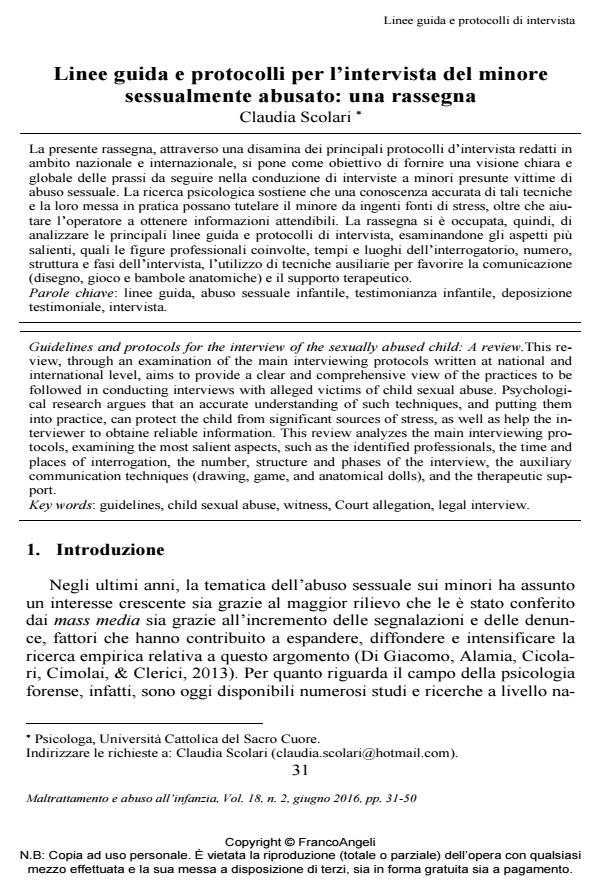Guidelines and protocols for the interview of the sexually abused child: A review.
Journal title MALTRATTAMENTO E ABUSO ALL’INFANZIA
Author/s Claudia Scolari
Publishing Year 2016 Issue 2016/2
Language Italian Pages 20 P. 31-50 File size 218 KB
DOI 10.3280/MAL2016-002003
DOI is like a bar code for intellectual property: to have more infomation
click here
Below, you can see the article first page
If you want to buy this article in PDF format, you can do it, following the instructions to buy download credits

FrancoAngeli is member of Publishers International Linking Association, Inc (PILA), a not-for-profit association which run the CrossRef service enabling links to and from online scholarly content.
This review, through an examination of the main interviewing protocols written at national and international level, aims to provide a clear and comprehensive view of the practices to be followed in conducting interviews with alleged victims of child sexual abuse. Psychological research argues that an accurate understanding of such techniques, and putting them into practice, can protect the child from significant sources of stress, as well as help the interviewer to obtaine reliable information. This review analyzes the main interviewing protocols, examining the most salient aspects, such as the identified professionals, the time and places of interrogation, the number, structure and phases of the interview, the auxiliary communication techniques (drawing, game, and anatomical dolls), and the therapeutic support.
Keywords: Key words: guidelines, child sexual abuse, witness, Court allegation, legal interview.
- Psychology and Market. Commentary on: "Psychology profession, clinical psychology, psychotherapy. Specificities and boundaries" Ruggero Andrisano Ruggieri, Maria Monaco, in RIVISTA DI PSICOLOGIA CLINICA 2/2025 pp.101
DOI: 10.3280/rpc2-2024oa18070
Claudia Scolari, Linee guida e protocolli per l’intervista del minore sessualmente abusato: una rassegna in "MALTRATTAMENTO E ABUSO ALL’INFANZIA" 2/2016, pp 31-50, DOI: 10.3280/MAL2016-002003